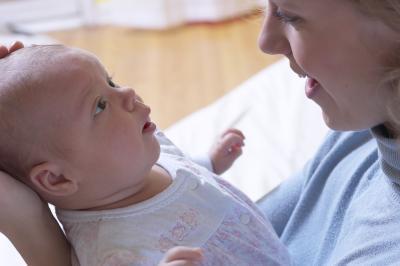In the movie, “Dan in Real Life” (2007), a single-father fumbles through dealing with his teenage daughter’s first love and learns that, “Love is not a skill … it’s an ability.” The way that we feel and convey love is not something we learn as adults, but a part of us at birth and then molded and shaped by experiences throughout our lives.
The Committee on Integrating the Science of Early Childhood Development reported in 2000 that those who do not establish secure attachments as infants often grow into adults who have difficulty understanding their own emotions as well as the feelings of others.
Bonding with your child is more than merely taking care of your baby’s needs. We all focus on providing the best meals, education, material needs and doting around-the-clock care but the best way to ensure a healthy emotional future is through nonverbal emotional exchanges with your child.
Babies don’t know what they need — they feel what they need — and communicate that in kind. Your nonverbal response makes your child feel safe, secure and balanced.
So what do we mean by nonverbal communication? Try to be mindful of these three simple cues to create a strong and secure attachment:
• Eye contact — Maintain eye contact with your child whenever you can. This makes your little one feel safe, relaxed and happy. Your children also will become more comfortable as they grow older holding their gaze with others.
• Facial expression — Children often lack the emotional intelligence to convey the details of their emotions in words, so by simply mirroring their facial expression will make them feel understood. Follow that with a hug to comfort them and then slowly change your expression to one of relaxation and calm. Watch as your child’s face, temperament and demeanor will follow your lead.
• Touch — One of the most loving ways to bond with your baby while nursing is to maintain eye contact and stroke her face. This gentle touch is soothing and causes your child to look to you for safety and comfort. Allow your baby to stroke your face as well.
Once again, we all do our best to give our time and attention, but often our responsibilities as an adult don’t fit so nicely with our responsibilities as a parent.
Routines get modified to fit busy schedules, story time gets rushed or cut short in time for our favorite TV shows and mealtime multitasking combines nursing with your mobile device of choice.
Remember, your baby will constantly be looking for and be affected by your nonverbal cues — both when you want them to and when you don’t. Do your best to make time with your baby exclusive and give your child all of your attention.
Even if your children are past their infant years, establishing a secure attachment can happen at any age. This is one more additional way that shows that you are your child’s first teacher.
Do your best to maintain loving eye contact, mirrored facial expressions and a compassionate touch with each of your family members and watch how the connection will grow among you all.
Practice makes perfect, so the earlier that your children learn to decipher and respond to the nonverbal cues of their loved ones the better equipped they will become at building healthy, emotionally attuned relationships and communicate more effectively as adults.
Cynthia Martin is the founder of the First Teacher program and director of Parenting Matters Foundation, which publishes newsletters for parents, caregivers and grandparents. Reach Martin at pmf@olypen.com or at 681-2250.



